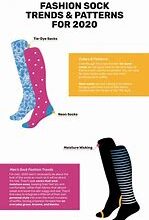
Learning to read is an important milestone for every child. It is a skill that opens up a whole new world of possibilities and opportunities. But how do you know if your child is ready to start their reading journey? There are several essential checkpoints that can help you determine if your child is ready to learn to read. By regularly observing and assessing their skills and interests, you can provide them with the support and materials they need to become successful readers.
One of the first signs that your child may be ready to start learning to read is their curiosity about print. They may show an interest in books, newspapers, or other written materials, and might even ask you to label objects or read to them. This curiosity about the written word is a good indication that they have an awareness of the alphabet and the different letters that make up words.
A child who is ready to learn to read will also typically have a basic vocabulary and a good grasp of spoken language. They will be able to match spoken words with objects and demonstrate phonological awareness. Phonological awareness refers to the ability to identify and manipulate the sounds in spoken language, which is an essential skill for developing phonics knowledge later on.
Another important checkpoint is the ability to sit still and pay attention. Learning to read requires concentration, so a child who is easily distracted or has difficulty focusing may not be ready to begin the learning process. However, it is important to note that every child is unique, and some children may be able to concentrate better through interactive activities or games rather than traditional print-rich materials.
When determining if your child is ready to learn to read, it is essential to provide them with age-appropriate reading materials. Choose books, songs, and games that match their interests and level of understanding. By using materials that capture their attention and incorporate their favorite topics, you can create a purposeful and enjoyable learning experience.
In conclusion, there are several checkpoints that can help you determine if your child is ready to learn to read. Look for signs of curiosity about print, basic vocabulary and phonological awareness, and the ability to sit still and pay attention. By providing age-appropriate materials and fostering their interest in reading, you can support your child on their journey to becoming confident and successful readers.
Section 1 Signs of Readiness
When determining if your child is ready to learn to read, there are several signs to look for. These signs indicate that your child has reached the necessary developmental milestones and is prepared to take the first steps towards reading.
- Recognition of letters and sounds: A child who is ready to learn to read will typically be able to recognize and identify letters of the alphabet, as well as associate them with their corresponding sounds. They may also have a growing vocabulary and can confidently use a range of simple words.
- Interest in books and stories: If your child shows a keen interest in books and enjoys being read to, it is a positive indicator of readiness. They may ask questions about the stories or show excitement when presented with new books.
- Phonological awareness: Being able to hear and identify different sounds is an important skill for reading. If your child can manipulate sounds and play with them (such as recognizing rhyming words or blending sounds together), they are likely ready to begin their reading journey.
- Print-rich environment: Providing a print-rich environment at home can also support your child’s reading development. This can be done by label objects around the house, displaying written words, and choosing books with clear and easy-to-read text.
- Bonding with letters and words: Children who are ready to read may start showing an interest in letters and words, such as pointing them out in books or trying to write them. They may also enjoy playing letter recognition games or engaging in activities that involve letters.
By recognizing these signs of readiness, parents can better support their child’s transition into becoming successful readers. Remember, every child develops at their own pace, so it is important to provide a supportive and encouraging environment as they embark on their reading journey.
Phonemic Awareness Development
Phonemic awareness is a crucial skill for children to develop before they begin learning to read. It is the ability to hear and manipulate individual sounds, or phonemes, in spoken words, which is essential for successful decoding and word recognition in reading. Here are some strategies and activities that can help enhance phonemic awareness development:
- Playing games that involve recognizing and matching similar sounds
- Reading stories and singing songs that emphasize rhyming words
- Using materials like letter cards to practice identifying and manipulating individual sounds in words
- Creating opportunities for children to hear and differentiate the sounds in spoken language
- Engaging children in activities that involve segmenting and blending sounds to create new words
- Regularly using a variety of manipulatives, such as plastic letters or blocks, to support phonemic awareness development
- Exploring the sounds, or phonemes, that make up words by breaking them down into their individual sounds (phonological awareness)
These activities not only support the development of phonemic awareness but also help children develop a wide range of other important pre-reading skills. By engaging children in these activities regularly, parents and educators can better prepare them for the exciting world of reading and set a strong foundation for academic success.
Knowledge of the Alphabet

A crucial checkpoint in determining if your child is ready to learn to read is their knowledge of the alphabet. Before children can start reading, they need to have a basic understanding of the letters and their corresponding sounds.
At an age-appropriate time, most children will naturally start asking about the alphabet. They might recognize letters in their environment, such as on signs or in books. They may also ask about written words and show interest in books and stories. These are all indications that they are ready to learn more about the alphabet and engage in reading activities.
Parents and teachers can provide a print-rich environment by choosing age-appropriate materials that introduce the alphabet in a fun and engaging way. There are various strategies and activities that can help children recognize and manipulate the letters. Some of these include phonemic awareness exercises, such as rhyming and syllable recognition, as well as activities that focus on matching spoken words with their corresponding written forms.
Reading simple alphabet books and engaging in activities that involve writing letters will also allow children to practice their knowledge of the alphabet. This can be done through tracing letters, writing them independently, and even putting letters together to form basic words.
| Reasons to focus on the knowledge of the alphabet: | The benefits it provides: |
|---|---|
| Helps children recognize and understand the sounds of spoken words | Prepares them for phonics and decoding skills |
| Allows children to start recognizing and writing age-appropriate words | Builds their vocabulary and reading comprehension |
| Engages children in the world of print and stories | Develops their curiosity and love for reading |
| Provides a foundation for learning more advanced reading skills | Opens up a wide range of academic opportunities |
By focusing on the knowledge of the alphabet, parents and teachers can help children embark on their reading journey and make the process enjoyable and rewarding. Remember, each child is unique, and their readiness to learn to read may vary. It’s important to observe their interest, curiosity, and readiness to engage with print-rich materials and activities.
Understanding Basic Sight Words
Recognizing basic sight words is an essential checkpoint in a child’s journey towards learning to read. Sight words are commonly used words that children should be able to recognize by sight, without having to sound them out letter by letter. These words are often not easily decodable and do not follow phonemic rules, making them crucial for developing reading fluency.
Understanding basic sight words enhances a child’s reading skills in several ways. First, it allows them to read more confidently and smoothly, as they don’t have to pause to sound out each word. This results in a better reading flow and improves comprehension. Second, it expands their vocabulary and encourages curiosity, as they encounter a wider range of words in their reading materials.
There are several signs that indicate a child is ready to start working on basic sight words. One sign is when they show an interest in learning the names of letters and can match them to their corresponding sounds. Another sign is when they can engage in rhyming and other phonemic awareness activities. Additionally, if a child shows curiosity about written words and tries to manipulate them (such as pretending to read or write), it can indicate readiness for learning sight words.
Parents can help their children develop sight word recognition skills through various methods. One effective way is by regularly reading together and pointing out sight words in books or other reading materials. Singing songs or providing other engaging activities that involve sight words can also be beneficial. These activities not only enhance sight word recognition but also promote bonding between parents and children.
Choosing appropriate sight word materials is crucial for successful learning. Parents should select materials that are at their child’s current reading level and include words that the child is familiar with. This will ensure that the child can easily recognize and understand the words, making the learning process more enjoyable and exciting.
When teaching sight words, it is important to use a multi-sensory approach. This includes using visual aids, tactile activities, and auditory techniques. For example, parents can use flashcards with the written sight words, have the child trace the words with their fingers, and say the words aloud. This combination of different senses helps strengthen the child’s overall understanding and retention of the sight words.
As children develop their knowledge of sight words, parents can gradually introduce more challenging words and incorporate them into different academic areas. For example, parents can ask their child to identify sight words in the written instructions for a game or during a word search activity. This integration helps children see the relevance of sight words in their everyday lives and further supports their development as confident readers.
In conclusion, understanding basic sight words is an important step in a child’s learning journey. It helps enhance their vocabulary, reading fluency, and overall reading comprehension. By regularly exposing children to sight words and providing engaging activities, parents can support their child’s development as successful readers and foster a love for learning.
Section 2: Supporting Your Child’s Reading Readiness
Recognizing if your child is ready to begin learning how to read is essential for their successful development. There are several checkpoints that can show if your child is prepared to start their reading journey. It is important to provide support and choose age-appropriate strategies that will encourage their interest in reading.
One of the first signs that a child is ready to learn to read is their ability to recognize written words. They may not be able to read the words fluently, but they can identify and label different objects, signs, or simple words. This recognition can be further developed by providing a print-rich environment, such as labeling items around the house or pointing out words in books, newspapers, or other materials.
Phonics is another important aspect of reading readiness. This involves understanding that words are made up of individual sounds, called phonemes. Helping your child recognize and differentiate between sounds can be done through word games, discussions about the sounds in different words, or playing with rhyming words. This knowledge of phonics will support their ability to decode unfamiliar words as they progress in their reading journey.
In addition to phonics, building vocabulary is crucial for reading readiness. Engaging children in discussions and conversations about the world around them can expand their understanding of different words and their meanings. Reading age-appropriate books together and talking about what is happening in the story can also help in developing their vocabulary. Providing ample opportunities for your child to hear and use new words will enhance their reading skills.
Creating a print-rich and language-rich environment can be an effective way to support your child’s reading readiness. By using various strategies, like labeling items, playing word games, and reading together, you can help them develop the necessary skills to become successful readers. It is important to remember that every child is unique and will progress at their own pace, so it is crucial to provide a supportive and encouraging environment that fosters their love for reading.
Reading Aloud Together

Reading aloud together is a great way to help young readers develop their vocabulary, show understanding, and enhance their reading skills. It not only introduces children to a wide range of materials but also creates a bonding experience with parents.
By reading aloud, parents can better engage their child in the story and make it a fun and enjoyable activity. This helps children recognize letters, hear the spoken and written word, and practice their basic reading skills.
Reading aloud can be done in different ways, such as asking questions about the story, pointing out signs and letters in the environment, or singing songs that involve reading. It helps children begin to recognize basic letter sounds, syllables, and words, and develops their phonemic awareness.
It is important for parents to provide age-appropriate and print-rich materials for their child. Children can benefit from reading books, newspapers, and stories that are appropriate for their age and interests. This not only reinforces their reading skills but also helps expand their imagination and understanding of the world around them.
During the reading journey, parents should have patience and create a nurturing environment. They can help their child by playing word games, engaging them in letter and word manipulations, and creating simple writing and reading activities.
Reading aloud together is one of the most effective ways to help children develop their reading abilities. It not only enhances their reading skills but also strengthens the parent-child bond. Through reading aloud together, children can become interested and able to engage with a wide range of materials. It is a purposeful activity that reinforces their reading skills and helps them on their journey to becoming confident readers.
Creating a Print-Rich Environment
Creating a print-rich environment is crucial in helping your child develop the necessary skills to become a successful reader. This environment should be filled with a wide range of age-appropriate reading materials and activities that both foster a love of reading and develop essential reading skills.
One of the first steps in creating a print-rich environment is introducing your child to the alphabet. Labeling objects around the house with the corresponding letter can help your child identify and recognize letters. Additionally, playing games that involve letter recognition, such as “I Spy,” can make learning the alphabet more fun and engaging.
Once your child is familiar with the alphabet, you can introduce sight words. Sight words are commonly used words that cannot be easily sounded out, such as “the” or “and.” These words are often encountered in written materials, and knowing them by sight can greatly improve reading fluency. You can create flashcards or use age-appropriate books and games to help your child learn and recognize sight words.
A print-rich environment should also include materials that help develop phonemic awareness, which is the ability to identify and manipulate individual sounds in spoken words. Rhyming games, such as “The Cat in the Hat,” can help children better understand the concept of rhyming and recognize rhyming words. Activities that involve breaking words into smaller parts, known as rime, can also help children identify patterns and understand how words are built.
Reading together with your child is an effective way to create a print-rich environment. By reading age-appropriate books and discussing the story, your child will develop a larger vocabulary and a deeper understanding of written language. Parents can also encourage their child to retell the story or predict what might happen next, reinforcing comprehension skills.
In addition to reading, singing nursery rhymes and playing word games can further enhance a print-rich environment. These activities not only make learning enjoyable but also engage different areas of the brain, reinforcing reading skills. Listening to and participating in songs also helps children develop their auditory and oral language skills.
Creating a print-rich environment requires patience, time, and effort, but it sets the foundation for a successful reading journey. By providing your child with a variety of age-appropriate reading materials, encouraging word play, and fostering a love of reading, you are giving them the tools they need to become confident and proficient readers. Remember, every child is unique and will progress at their own pace, so it’s important to keep the environment exciting and tailored to their needs.
In conclusion, a print-rich environment is crucial for preparing children to become successful readers. By providing a wide range of age-appropriate materials and engaging activities, parents can help their children develop the essential skills needed for reading. Remember to introduce the alphabet, sight words, and phonemic awareness activities in a fun and interactive way. Reading together, singing songs, and playing word games will make the learning process enjoyable and reinforce the skills necessary for reading success.



